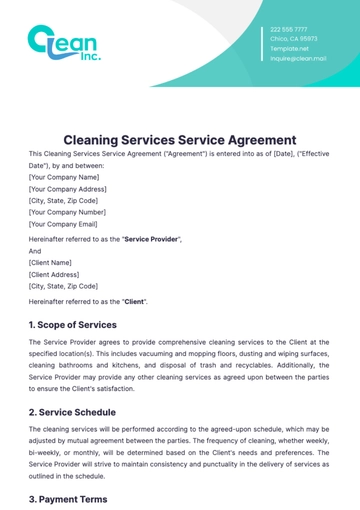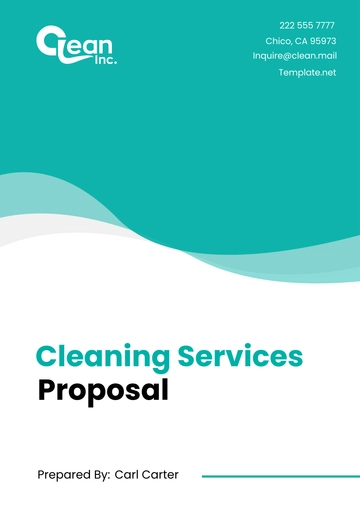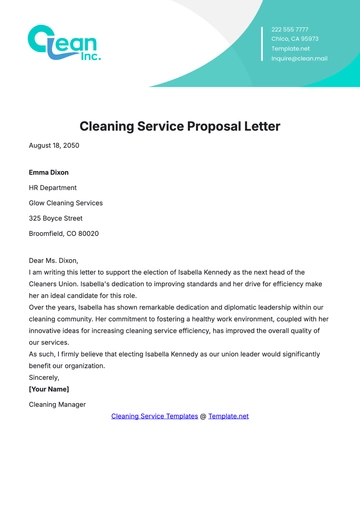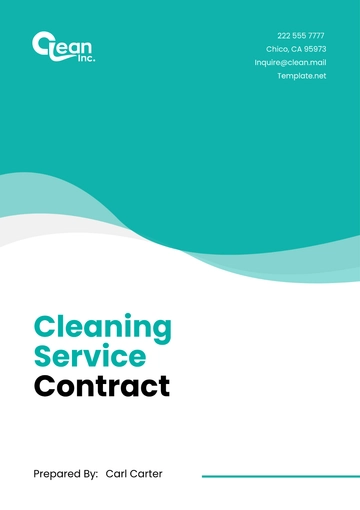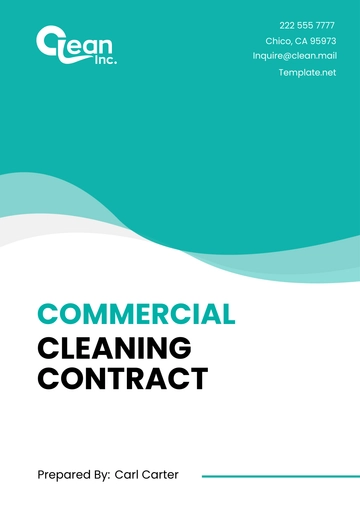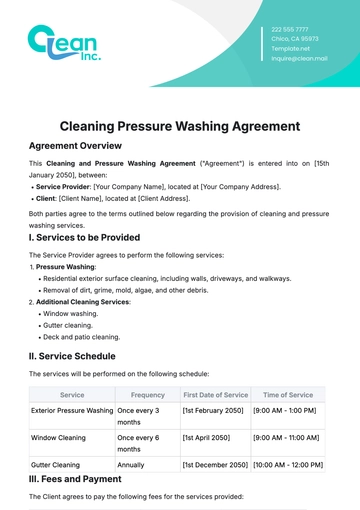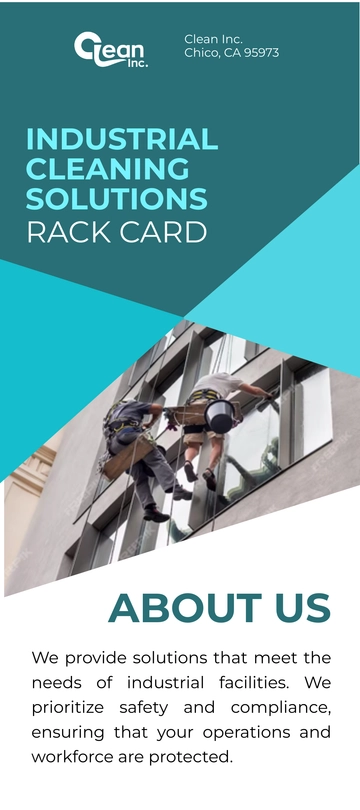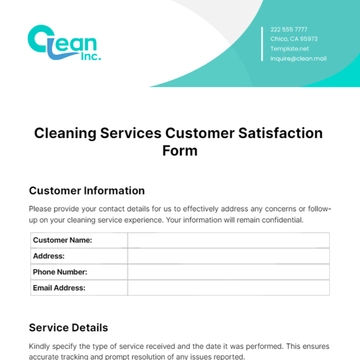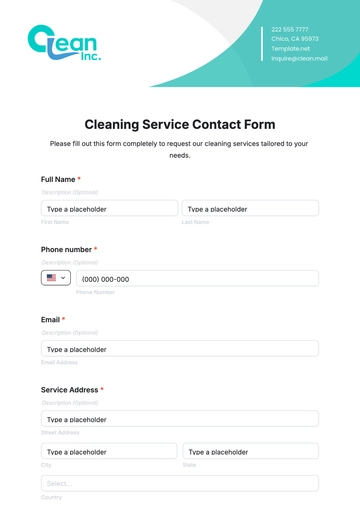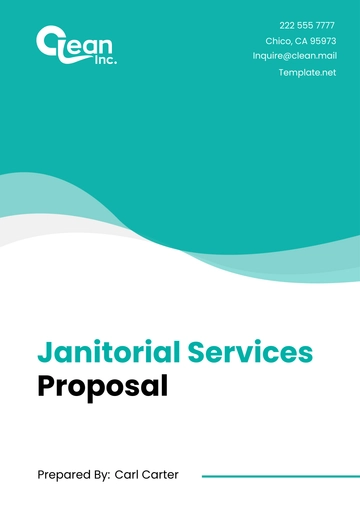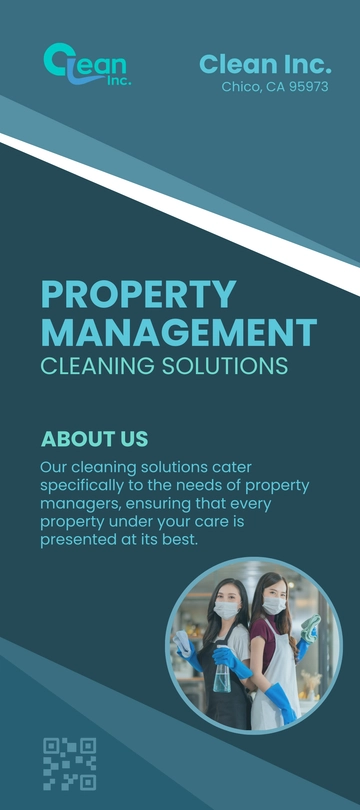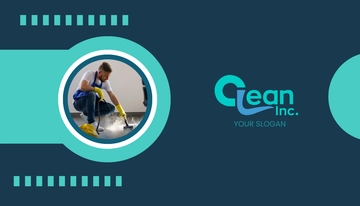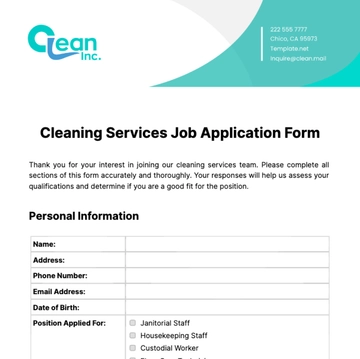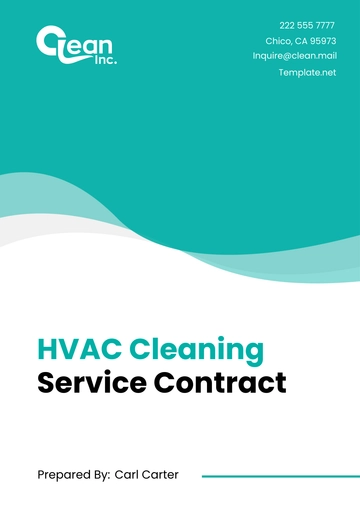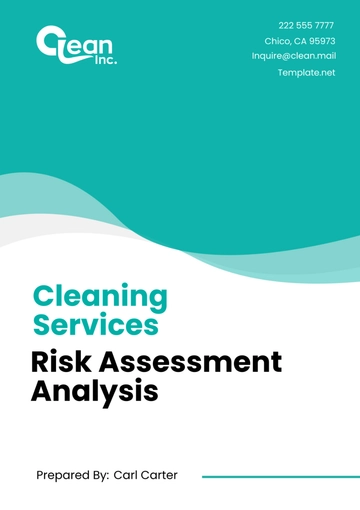Free Cleaning Services Financial Literacy for Managers Guide
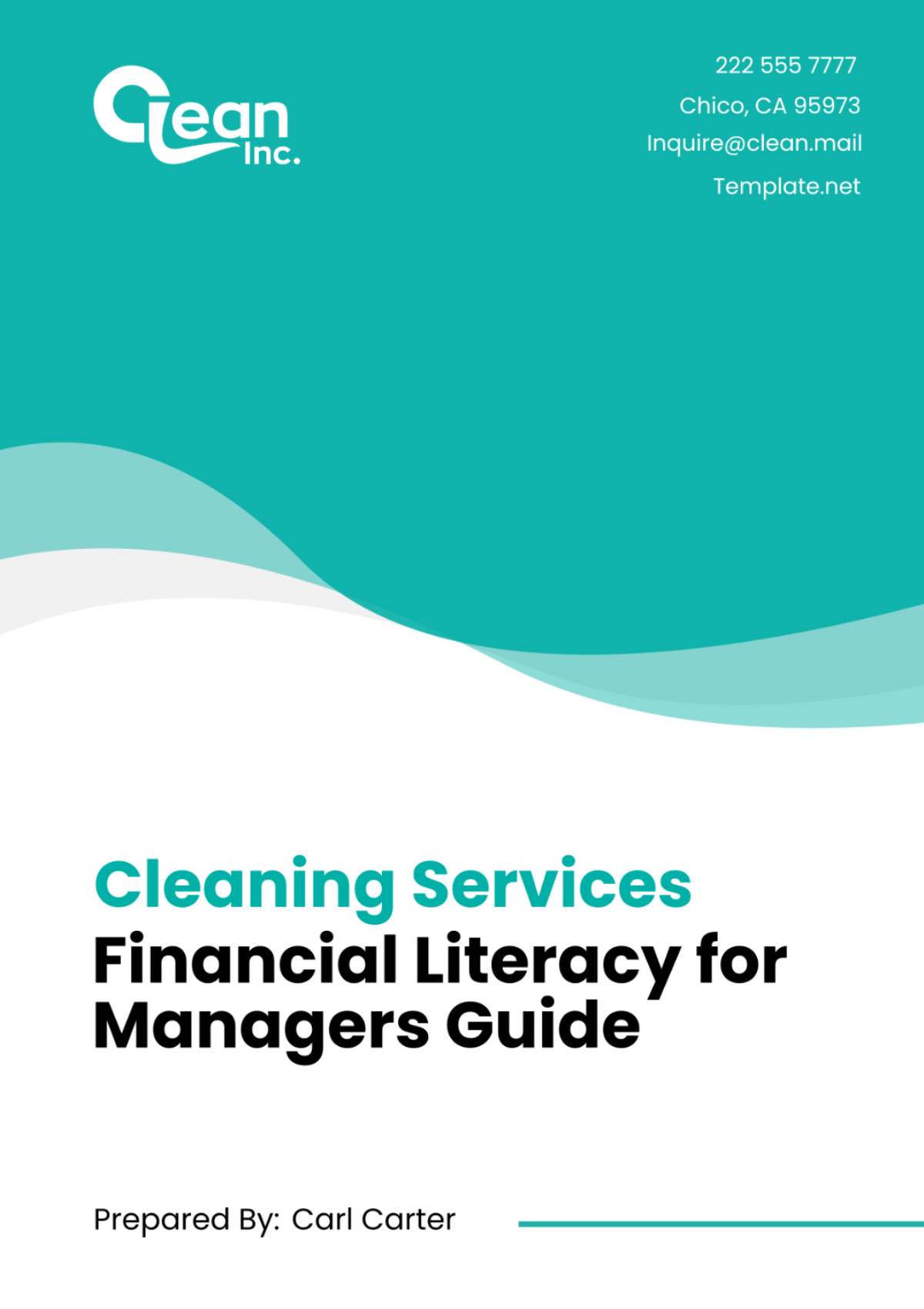
I. Introduction:
Tailored specifically for managers at [Your Company Name] Cleaning Services, this Cleaning Services Financial Literacy for Managers Guide will explore essential financial concepts and strategies to help managers effectively manage the financial aspects of our business. From budgeting to financial planning, we'll delve into key areas that will empower managers to make informed decisions and contribute to the success and profitability of [Your Company Name].
II. Budgeting:
Budgeting is a cornerstone of financial management that allows us to plan, track, and control our financial resources effectively. As a manager at [Your Company Name] Cleaning Services, understanding and mastering the budgeting process is crucial for optimizing our operations and ensuring long-term financial health.
A. Purpose of Budgeting:
Plan: By setting financial targets and allocating resources to various activities and departments.
Control: By comparing actual financial performance against budgeted amounts, we can identify discrepancies and take corrective action as needed.
Evaluate Performance: Budgets provide a benchmark for evaluating the performance of different departments, projects, or initiatives.
Make Informed Decisions: Budgets provide valuable insights that enable us to make informed decisions regarding resource allocation, investments, and strategic planning.
B. Types of Budgets:
Operating Budget: Focuses on day-to-day expenses and revenue generation activities, including labor, supplies, utilities, and marketing expenses.
Capital Budget: Plans for major investments in long-term assets such as equipment, vehicles, or facility upgrades.
Cash Budget: Forecasts cash inflows and outflows to ensure adequate liquidity and prevent cash flow shortages.
Master Budget: Integrates all individual budgets (operating, capital, cash) to provide a comprehensive overview of the organization's financial plan.
C. Budgeting Process:
Identify Goals and Objectives: Define the financial goals and objectives of the organization, considering factors such as growth targets, profitability goals, and operational efficiency.
Gather Information: Collect relevant data and historical financial information to inform the budgeting process. This may include sales forecasts, expense projections, and market trends.
Establish Budget Parameters: Set realistic and achievable budget targets based on historical performance, industry benchmarks, and future expectations.
Allocate Resources: Distribute financial resources among different departments, projects, or cost centers based on their respective needs and priorities.
Monitor and Review: Continuously monitor actual financial performance against budgeted amounts, identify variances, and take corrective actions as necessary.
Adjust as Needed: Flexibility is key in the budgeting process. As circumstances change or unexpected events arise, be prepared to revise and adjust the budget accordingly.
D. Key Considerations:
Flexibility: Budgets should be flexible enough to accommodate changes in business conditions, market dynamics, or strategic priorities.
Accuracy: Strive for accuracy in budget estimates by leveraging historical data, market research, and input from relevant stakeholders.
Communication: Foster open communication and collaboration among departments and teams to ensure alignment with budgetary goals and objectives.
Accountability: Hold individuals and departments accountable for their budget performance and empower them to take ownership of their financial responsibilities.
III. Pricing Strategies:
A. Cost-Based Pricing:
Cost-Plus Pricing: Calculate the cost of providing cleaning services, including labor, materials, overhead, and desired profit margin. Add a markup to cover costs and generate a profit.
Break-Even Analysis: Determine the minimum price required to cover all costs and break even. This involves calculating the contribution margin per unit and setting prices accordingly.
B. Market-Based Pricing:
Competitive Pricing: Set prices based on competitor pricing and market benchmarks. Conduct market research to understand competitor pricing strategies, differentiate our services, and position ourselves competitively.
Value-Based Pricing: Determine prices based on the perceived value of our cleaning services to customers. Consider factors such as quality, reliability, convenience, and customer service when setting prices.
C. Dynamic Pricing:
Time-Based Pricing: Adjust prices based on demand fluctuations throughout the day, week, or season. Offer discounts during off-peak hours or charge premium rates for peak times.
Seasonal Pricing: Modify prices seasonally to reflect changes in demand and supply dynamics. Offer promotions or discounts during slower seasons to stimulate demand.
D. Psychological Pricing:
Charm Pricing: Set prices just below round numbers (e.g., $9.99 instead of $10) to create the perception of a lower price and encourage purchase.
Bundle Pricing: Group related cleaning services together and offer them at a discounted package price. This encourages customers to purchase multiple services at once and increases overall revenue.
E. Discounted Pricing:
Penetration Pricing: Set initial prices lower than competitors to penetrate the market and gain market share quickly. Once established, gradually increase prices over time.
Promotional Pricing: Offer temporary discounts, coupons, or special promotions to attract new customers and generate buzz around our cleaning services.
F. Geographical Pricing:
Adjust prices based on geographic location and local market conditions.
Consider factors such as cost of living, competition, and customer demographics when setting prices for different regions.
G. Value-Added Pricing:
Offer additional services, features, or benefits alongside our core cleaning services to justify higher prices.
Highlight the value-added services to differentiate ourselves from competitors and justify premium pricing.
H. Price Skimming:
Set high initial prices for innovative or premium cleaning services to capture early adopters and maximize revenue.
Gradually lower prices over time as demand stabilizes and competitors enter the market.
IV. Cost Management:
Cost management is critical for maintaining profitability and competitiveness in the cleaning services industry. By effectively controlling costs, [Your Company Name] Cleaning Services can optimize resource utilization, improve operational efficiency, and enhance overall financial performance. Here are key strategies for managing costs effectively:
A. Identify and Analyze Costs:
Conduct a thorough analysis of all costs associated with providing cleaning services, including direct costs (e.g., labor, materials, equipment) and indirect costs (e.g., overhead, utilities, administrative expenses).
Categorize costs into fixed and variable categories to better understand cost behavior and identify opportunities for cost reduction.
B. Set Cost Reduction Targets:
Establish clear cost reduction targets based on financial goals, industry benchmarks, and performance metrics. Aim to reduce costs without compromising service quality or customer satisfaction.
Prioritize cost reduction initiatives based on their potential impact on profitability and feasibility of implementation.
C. Streamline Operations:
Identify inefficiencies in current processes and workflows that contribute to unnecessary costs or waste. Streamline operations by implementing lean principles, standardizing procedures, and eliminating non-value-added activities.
Optimize staffing levels and schedules to match workload fluctuations and minimize labor costs while maintaining service quality.
D. Negotiate Supplier Contracts:
Negotiate favorable terms with suppliers and vendors to secure competitive pricing, discounts, and favorable payment terms. Consolidate purchasing to leverage economies of scale and reduce procurement costs.
Regularly review supplier contracts and explore alternative suppliers to ensure ongoing cost savings and mitigate supply chain risks.
E. Invest in Technology and Automation:
Invest in technology and automation solutions to streamline operations, improve productivity, and reduce manual labor costs. This may include implementing cleaning equipment with advanced features, using scheduling software to optimize routes and assignments, and adopting digital invoicing and payment systems to streamline administrative tasks.
Leverage data analytics and business intelligence tools to identify cost-saving opportunities, monitor key performance indicators, and make data-driven decisions.
F. Manage Overhead Costs:
Identify and scrutinize overhead costs such as rent, utilities, insurance, and administrative expenses. Look for opportunities to reduce overhead through cost-sharing arrangements, renegotiating leases, or implementing energy-saving initiatives.
Monitor overhead costs regularly and track variances against budgeted amounts to identify areas for improvement and control.
G. Implement Quality Control Measures:
Implement rigorous quality control measures to minimize errors, rework, and customer complaints, which can incur additional costs and damage reputation. Invest in employee training, quality assurance programs, and customer feedback mechanisms to ensure service consistency and customer satisfaction.
Continuously monitor service delivery standards and address any quality issues promptly to prevent cost overruns and preserve profitability.
H. Encourage Cost-Conscious Culture:
Foster a cost-conscious culture among employees by promoting awareness of cost implications and encouraging suggestions for cost-saving initiatives. Recognize and reward employees for contributing ideas or actions that lead to cost reductions or operational improvements.
Provide regular training and education on cost management principles and practices to empower employees at all levels to contribute to cost reduction efforts.
V. Financial Analysis:
Financial analysis is a critical component of assessing the financial health and performance of [Your Company Name] Cleaning Services. By analyzing key financial statements and ratios, managers can gain valuable insights into the company's profitability, liquidity, solvency, and operational efficiency. Here are key elements of financial analysis:
A. Interpreting Financial Statements:
Balance Sheet: Analyze the company's financial position at a specific point in time by examining assets, liabilities, and shareholders' equity. Assess liquidity, leverage, and capital structure.
Income Statement: Evaluate the company's profitability over a specific period by reviewing revenue, expenses, and net income. Analyze gross profit margin, operating profit margin, and net profit margin.
Cash Flow Statement: Examine the company's cash inflows and outflows to assess liquidity and cash flow adequacy. Analyze operating, investing, and financing activities to identify sources and uses of cash.
B. Financial Ratio Analysis:
Profitability Ratios:
Gross Profit Margin: Calculate the percentage of revenue remaining after deducting the cost of goods sold. Higher margins indicate better efficiency in generating profit.
Operating Profit Margin: Measure the company's operating efficiency by comparing operating income to revenue. A higher margin indicates better operational performance.
Net Profit Margin: Assess overall profitability by comparing net income to revenue. Higher margins indicate better bottom-line performance.
Liquidity Ratios:
Current Ratio: Evaluate the company's ability to meet short-term obligations by comparing current assets to current liabilities. A ratio greater than 1 indicates sufficient liquidity.
Quick Ratio: Measure the company's immediate liquidity by excluding inventory from current assets. A higher ratio indicates better short-term liquidity.
Solvency Ratios:
Debt-to-Equity Ratio: Assess the company's leverage by comparing total debt to shareholders' equity. Lower ratios indicate lower financial risk.
Interest Coverage Ratio: Measure the company's ability to meet interest obligations by comparing operating income to interest expense. Higher ratios indicate better debt-servicing capacity.
Efficiency Ratios:
Asset Turnover Ratio: Evaluate the company's efficiency in utilizing assets to generate revenue by comparing revenue to total assets. Higher ratios indicate better asset utilization.
Accounts Receivable Turnover: Measure the efficiency of receivables management by comparing credit sales to average accounts receivable. Higher turnover ratios indicate faster collection of receivables.
C. Trend Analysis:
Compare financial performance over multiple periods to identify trends and patterns. Analyze changes in key financial metrics such as revenue growth, profit margins, and return on investment.
Identify areas of improvement or deterioration and assess the effectiveness of strategic initiatives and operational changes.
D. Benchmarking:
Compare [Your Company Name] Cleaning Services' financial performance to industry benchmarks and competitors' performance. Identify areas where the company excels or lags behind peers and industry standards.
Use benchmarking data to set performance targets, identify best practices, and drive continuous improvement initiatives.
E. Financial Forecasting:
Use historical financial data and trend analysis to forecast future financial performance and cash flow. Develop realistic projections based on market conditions, industry trends, and internal factors.
Incorporate sensitivity analysis to assess the impact of various scenarios and external factors on financial outcomes.
F. Risk Assessment:
Identify and assess financial risks that could impact [Your Company Name] Cleaning Services' financial stability and profitability. Consider risks related to market conditions, regulatory changes, competitive pressures, and operational challenges.
Develop risk mitigation strategies to manage and minimize potential adverse effects on the company's financial performance.
VI. Financial Planning:
Financial planning is a strategic process that involves setting financial goals, creating actionable plans, and monitoring progress towards achieving those goals. For [Your Company Name] Cleaning Services, effective financial planning is essential for maximizing profitability, managing risks, and ensuring long-term sustainability. Here are the key elements of financial planning:
A. Setting Financial Goals:
Define clear and measurable financial goals for [Your Company Name] Cleaning Services, such as increasing revenue, improving profitability, expanding market share, or reducing costs.
Align financial goals with broader business objectives and strategic priorities to ensure coherence and focus across the organization.
B. Budgeting and Forecasting:
Develop comprehensive budgets and financial forecasts that outline revenue projections, expense estimates, and cash flow expectations for [Your Company Name] Cleaning Services.
Use historical financial data, market research, and industry trends to inform budget assumptions and forecast future financial performance.
Regularly review and update budgets and forecasts to reflect changes in business conditions, market dynamics, and strategic initiatives.
C. Capital Expenditure Planning:
Identify and prioritize capital investment opportunities that support [Your Company Name] Cleaning Services' growth objectives and strategic priorities.
Evaluate potential investments based on their expected return on investment (ROI), payback period, and alignment with long-term business strategy.
Allocate financial resources effectively to fund capital projects while maintaining financial flexibility and liquidity.
D. Risk Management:
Assess and mitigate financial risks that could impact [Your Company Name] Cleaning Services' financial performance and stability.
Identify key risks, such as market volatility, regulatory changes, economic downturns, or competitive pressures, and develop risk mitigation strategies to address them.
Implement appropriate risk management tools and techniques, such as insurance coverage, hedging strategies, or contingency planning, to protect against potential financial losses.
E. Tax Planning:
Optimize [Your Company Name] Cleaning Services' tax position by leveraging available tax incentives, deductions, and credits to minimize tax liabilities.
Stay informed about relevant tax laws, regulations, and changes that could impact the company's tax obligations and financial planning strategies.
Work closely with tax advisors and professionals to develop tax-efficient strategies that maximize after-tax profits and support long-term financial goals.
F. Debt Management:
Manage [Your Company Name] Cleaning Services' debt obligations effectively by balancing the use of debt financing with the company's financial capacity and risk tolerance.
Evaluate debt financing options, such as loans, lines of credit, or bonds, based on their terms, interest rates, and repayment schedules.
Develop a debt repayment plan that prioritizes high-interest debt and minimizes interest expenses while preserving financial flexibility.
G. Monitoring and Performance Measurement:
Establish key performance indicators (KPIs) and financial metrics to track [Your Company Name] Cleaning Services' progress towards achieving financial goals and objectives.
Implement regular monitoring and reporting processes to review financial performance, assess variances against budget and forecast targets, and identify areas for improvement.
Use performance measurement data to make informed decisions, adjust financial plans as needed, and drive continuous improvement initiatives.
VII. Conclusion:
In conclusion, mastering financial literacy is essential for managers at [Your Company Name] Cleaning Services to drive profitability, ensure sustainability, and achieve long-term success. By implementing effective budgeting, pricing strategies, cost management techniques, financial analysis, cash flow management, taxation strategies, and financial planning, managers can navigate the complexities of the financial landscape, make informed decisions, and contribute to the growth and prosperity of the company. Continuous learning, adaptation, and proactive financial management will be key to overcoming challenges and seizing opportunities in the ever-evolving cleaning services industry.
- 100% Customizable, free editor
- Access 1 Million+ Templates, photo’s & graphics
- Download or share as a template
- Click and replace photos, graphics, text, backgrounds
- Resize, crop, AI write & more
- Access advanced editor
Empower your cleaning services managers with financial literacy using Template.net's Financial Literacy for Managers Guide Template. Customizable via our AI Editor Tool, this template provides comprehensive insights into budgeting, expense management, and financial decision-making. Equip your team with the knowledge to drive profitability and operational efficiency. Elevate financial acumen effortlessly with our easily editable template!
You may also like
- Cleaning
- Cleaning Brochure
- Cleaning Checklist Service
- Cleaning Estimate
- Cleaning Flyer
- Cleaning Invoice
- Cleaning Proposal
- Cleaning Quotation
- Cleaning Services Receipt
- Cleaning Services Roster
- Cleaning Schedule
- Cleaning Services Survey
- Cleaning Services Card
- Cleaning Services Banner
- Cleaning Services Form
- Cleaning Contract
- Cleaning Business Card
- Cleaning Services Agreement
- Cleaning Services Poster
- Cleaning Services Plan
- Cleaning Services Letterhead
- Window Cleaning
- Cleaning-Services Logo



